Potřebujeme váš souhlas k využití jednotlivých dat, aby se vám mimo jiné mohly ukazovat informace týkající se vašich zájmů. Souhlas udělíte kliknutím na tlačítko „OK“.
ASTM D7828-12
Standard Test Method for Determination of Residue Composition in Liquefied Petroleum Gas (LPG) Using Automated Thermal Desorption/Gas Chromatography (ATD/GC) (Withdrawn 2021)
Automaticky přeložený název:
Standardní zkušební metoda pro stanovení reziduí složení v Zkapalněný ropný plyn (LPG), pomocí automatizovaných termické desorpce / plynové chromatografie (ATD / GC)
NORMA vydána dne 1.11.2012
Informace o normě:
Označení normy: ASTM D7828-12
Poznámka: NEPLATNÁ
Datum vydání normy: 1.11.2012
Kód zboží: NS-39159
Počet stran: 15
Přibližná hmotnost: 45 g (0.10 liber)
Země: Americká technická norma
Kategorie: Technické normy ASTM
Kategorie - podobné normy:
Anotace textu normy ASTM D7828-12 :
Keywords:
gas chromatography, liquefied petroleum gas, LPG, residue, residue in LPG, thermal desorption, ICS Number Code 75.160.30 (Gaseous fuels)
Doplňující informace
| Significance and Use | ||||||||||||||
|
5.1 Residue in LPG is a contaminant that can lead to operational problems in some end use applications. Engines, micro-turbines, fuel cells and other equipment may be sensitive to residue levels as low as 10 mg/kg. 5.2 Contamination of LPG can occur during production, transport, delivery, storage and use. A qualitative indication of the contaminants can help track down the source of the contamination from manufacture, through the distribution system, and to the end user. 5.3 This test method is designed to provide a lower detection limit, wider dynamic range, and better accuracy than gravimetric methods like Test Method D2158. 5.4 This test method can be performed with little or no discharge of LPG vapors, compared to Test Method D2158 which requires evaporation of 100 mL of sample per test. 5.5 Sampling for residue in LPG using sorbent tubes can be performed in the field, and the sorbent tubes sent to a laboratory for analysis. This saves significant costs in shipping (weight of tube is approximately 10 grams), and is much safer and easier than transporting LPG cylinders. 5.6 This test method determines total residues from C6 to C40, compared to a thermal gravimetric residue method such as Test Method D2158 which heat the residue to 38°C, resulting in a lower recovery due to loss of lighter residue components. 5.7 If there is a need to decrease the detection limit of residue or individual compounds of interest below 10 µg/g, the procedures in this test method can be modified to achieve 50 times enhanced detection limit, or 0.2 µg/g. |
||||||||||||||
| 1. Scope | ||||||||||||||
|
1.1 This test method covers the determination of residue in LPG by automated thermal desorption/gas chromatography (ATD/GC) using flame ionization detection (FID). 1.2 The quantitation of residue covers a component boiling point range from 69°C to 522°C, equivalent to the boiling points of C6 through C40 n-paraffins. 1.2.1 The boiling range covers possible LPG contaminants such as gasoline, diesel fuel, phthalates and compressor oil. Qualitative information on the nature of the residue can be obtained from this test method. 1.2.2 Materials insoluble in LPG and components which do not elute from the gas chromatograph or which have no response in a flame ionization detector are not determined. 1.2.3 The reporting limit (or limit of quantitation) for total residue is 6.7 µg/g. 1.2.4 The dynamic range of residue quantitation is 6.7 to 3300 µg/g. 1.3 The values stated in SI units are to be regarded as standard. No other units of measurement are included in this standard. 1.4 This standard does not purport to address all of the safety concerns, if any, associated with its use. It is the responsibility of the user of this standard to establish appropriate safety and health practices and determine the applicability of regulatory limitations prior to use. |
||||||||||||||
| 2. Referenced Documents | ||||||||||||||
|
Podobné normy:
Historická
1.5.2010
Historická
1.5.2013
Historická
1.10.2011
Historická
1.11.2011
Historická
1.1.2011
Historická
1.1.2014


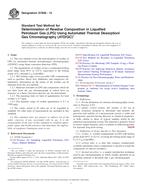
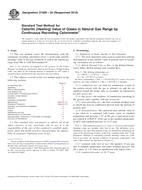 ASTM D1826-94(2010)..
ASTM D1826-94(2010)..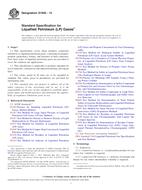 ASTM D1835-13
ASTM D1835-13 ASTM D1837-11
ASTM D1837-11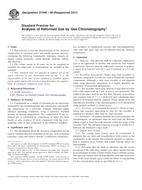 ASTM D1946-90(2011)..
ASTM D1946-90(2011)..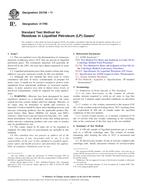 ASTM D2158-11
ASTM D2158-11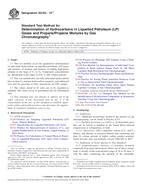 ASTM D2163-14e1
ASTM D2163-14e1
 Cookies
Cookies
